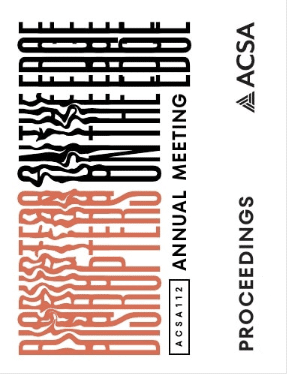Author(s): Dongsei Kim
This paper explores the concept of land acknowledgment, explaining its essence, values, and limitations. Moreover, it sheds light on a notable gap: the lack of land acknowledgments within the higher education institutions in the United States, with a particular emphasis on those that have National Architectural Accrediting Board (NAAB) accredited professional Schools of Architecture. It explores Land Acknowledgment, a term typically referring to a formal statement or recognition made at the beginning of an event, gathering, or document. It acknowledges the Indigenous peoples and their historical connection to the land on which the event, institution, or project takes place. Land acknowledgments are often used to show respect for the Indigenous communities whose land was colonized. The paper analyzes the cultural and pedagogical merits of land acknowledgments within this context. It also endeavors to unpack their limitations, acknowledging that they can be construed as symbolic gestures devoid of substantive action. Furthermore, the paper surveys the inadequate implementation of land acknowledgments within schools of architecture in the United States, especially compared to the schools’ hosting institutions. This lack of land acknowledgments is more noticeable when compared to other countries with similar histories of colonization, such as Australia, Canada, and New Zealand. In conclusion, the paper is a brief study of land acknowledgment that offers insights into the value and the lack of land acknowledgments in the NAAB-Accredited Schools of Architecture within the higher education institutions in the US, calling for actions, and pointing to the next steps that would help to build a better inclusive learning environment for architecture students and future architects.
https://doi.org/10.35483/ACSA.AM.112.82
Volume Editors
Germane Barnes & Blair Satterfield
ISBN
978-1-944214-45-6

 Study Architecture
Study Architecture  ProPEL
ProPEL 
